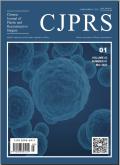同指背桡侧逆行皮瓣的技术改良:拇指桡侧缺损皮瓣优化的初步病例报告
Chinese Journal of Plastic and Reconstructive Surgery
Pub Date : 2025-09-01
DOI:10.1016/j.cjprs.2025.08.002
引用次数: 0
摘要
拇指桡端软组织重建仍然具有外科挑战性,特别是当标准选择如风筝或br本文章由计算机程序翻译,如有差异,请以英文原文为准。
Technical refinement of the reverse homodigital dorsoradial flap: A preliminary case report on flap optimization for radial thumb defects
Soft tissue reconstruction of the radial thumb tip remains surgically challenging, particularly when standard options such as kite or Brünelli flaps are less suitable due to anatomical constraints. This technical note presents the case of a 37-year-old male with a radial-sided distal thumb defect reconstructed using a reverse homodigital dorsoradial flap. Two key refinements were applied: preservation of approximately 5 mm of subcutaneous tissue to support venous outflow and a 3–5 mm proximal safety margin at the pivot point based on Doppler assessment to reduce pedicle tension during 180° rotation. The flap was inset without tunneling and healed without complications. Functional recovery was confirmed by progressive improvements in the disabilities of the arm, shoulder and hand score (from 25 at 1 month to 4.2 at 1 year), normal range of motion, and two-point discrimination (from 5 mm to 4 mm). This case highlights the practical advantages of flap design refinement for radial thumb reconstruction and supports its reproducibility in similar clinical scenarios. However, as this is a single case report, further validation with studies involving multiple cases is necessary to confirm the reliability and broad applicability of these refinements.
求助全文
通过发布文献求助,成功后即可免费获取论文全文。
去求助
来源期刊

Chinese Journal of Plastic and Reconstructive Surgery
Surgery, Otorhinolaryngology and Facial Plastic Surgery, Pathology and Medical Technology, Transplantation
CiteScore
0.40
自引率
0.00%
发文量
115
审稿时长
55 days
 求助内容:
求助内容: 应助结果提醒方式:
应助结果提醒方式:


